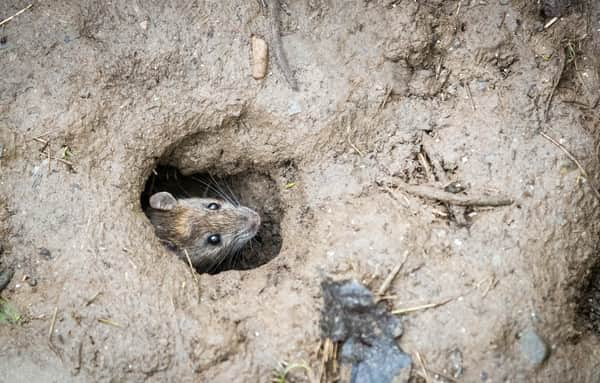
What Does a Rat's Nest Look Like? The most common types of rats found in the United States are the roof rat, Rattus rattus, and the Norway rat, Rattus norvegicus. While both can be found in urban and rural settings, these species are not friends. Norway rats are larger, and will take over an area at the expense of the smaller roof rats. Despite their enmity, however, these rats do have some things in common. Take, for example, their building of rat nests.
Rat burrows Rats are clever rodents and will adapt to whatever situation they find themselves in. When it comes to dwelling habits, you can find evidence of a rat nest, rat burrow or rat hole, depending on what was easiest.
Typically, if you find rat holes and burrows they are going to belong to Norway rats. These rats often burrow alongside foundations, in overgrown areas and below garbage or woodpiles. In homes, their burrows or nests are found in basements or the lower levels of homes and buildings. It is possible for there to be multiple burrows in close proximity to each other. So, what does a rat hole look like?
The entrance to a rat's burrow is typically 2 to 4 inches across. Active burrows have smooth walls and the dirt is hard-packed with loose dirt fanning out at the entrance. The entrance will also be clear of debris and spider webs. To determine if a burrow is active, stuff old newspaper or leaves down the entry hole and wait. When rats are present they will usually clear the opening within a day or two.
Now that you know what the exterior looks like, you may be asking, "What does a rat burrow look like inside?" Norway rat burrows include a tunnel connecting the entrance to several escape holes and the main nest, which is belowground. Burrows can be up to 18 inches deep, include up to 3 feet of rat tunnels and house multiple rodents.
Rat nests Roof rats build their nests aboveground, as their name would suggest. Rat nests belonging to these rodents are often found in trees, attics and areas overgrown with vines or shrubbery. They may also be found inside walls, cabinetry or hollow ceilings. Because they prefer to travel aboveground, roof rats rarely dig burrows for their nests if another option is available.
Most rats will have several different nest sites or burrows and the rodent family group will move between them. Rats need water daily, so all sites must have access to a water supply.
If you are seeing signs of rat nests or rat burrows in and around your home, call a pest management professional to explore your options for control.



